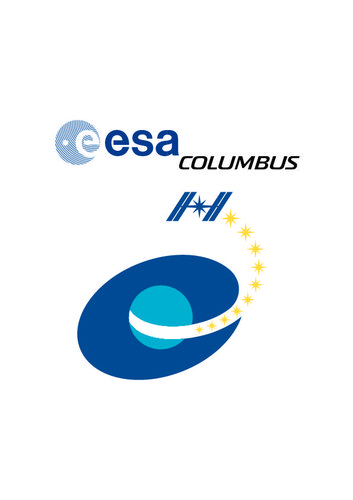Columbus: The European laboratory in Earth orbit
Opportunity also for industry-driven experiments in space
The Columbus laboratory will be launched in early February 2008 and is the cornerstone of ESA's contribution to the International Space Station (ISS). It is the first European laboratory dedicated to long-term research in space. Columbus will give an enormous boost to the research under space conditions and will significantly enhance the research capabilities of the ISS, for the benefit of European scientists and industry.
Columbus will be launched with several dedicated research facilities to study in particular the effect of weightlessness: The Biolab supports experiments on micro-organisms, cell and tissue cultures, and small plants; the Fluid Science Laboratory investigates the complex behaviour of fluids; the European Physiology Module supports human physiology experiments (investigating the influence of weightlessness on muscles and bones, the cardiovascular system, respiratory system, or the immune system). This research is relevant to better understand the functioning of the human body and therefore also to cure related diseases on Earth. The European Drawer Rack provides a flexible experiment carrier for a large variety of scientific disciplines.
Also two external payloads will be installed: the European Technology Exposure Facility (EuTEF), which hosts a range of experiments which need exposure to space, and the SOLAR observatory, which will carry out a spectral study of the Sun for at least 18 months. The research facilities have been designed to allow for a largely automatic operation. They are furthermore controllable from ground stations in order to minimise the crew time necessary to supervise the experiments.
Furthermore, ESA is developing new technologies for onboard analysis of experiments so that the return of samples back to Earth can be limited. Such technologies are also interesting for Earth applications and future exploration missions.
Columbus will be able to deliver science from the very start, immediately supporting a full European experiment programme. Some 100 experiments will be carried out in the first year of operation of the laboratory, which more than triples the annual amount of ESA experiments carried out aboard the ISS in the pre-Columbus period.
Microgravity: a tool for industrial research

The weightlessness and other space conditions on the International Space Station also provide a unique environment for application-oriented and industrial research. Be it biotechnology, material science or fluid physics, the facilities and resources available on board of Columbus not only allow scientists to carry out their research, but also offer companies the opportunity for developing and testing new products and innovative technologies.
If you want to know more about how your company could conduct research or technology demonstration on the ISS and on Columbus, please contact us under issbusiness@esa.int or look at our website www.esa.int/issbusiness.
There you will find also a permanent "open call" which allows potential customers to present their R&D or technology demonstration ideas related to the ISS at any time. ESA has established all that is necessary to guide and support you starting from the initial project idea through to its actual implementation, including the protection and exploitation of any IPRs that may result.




